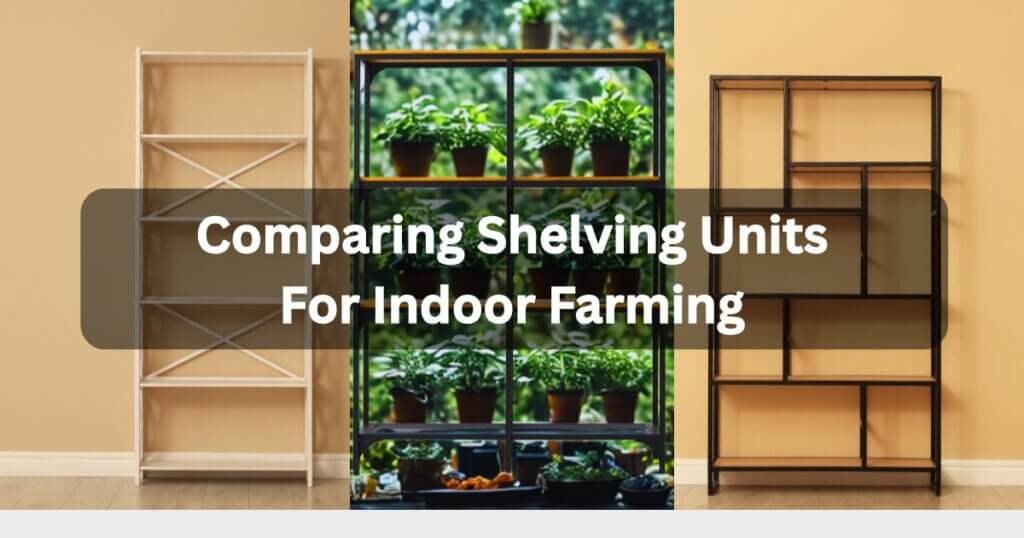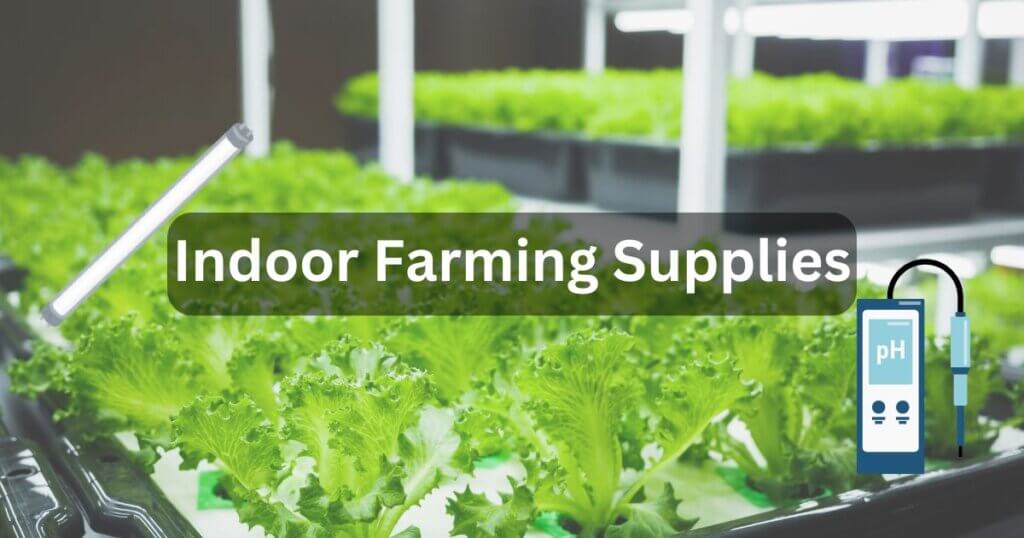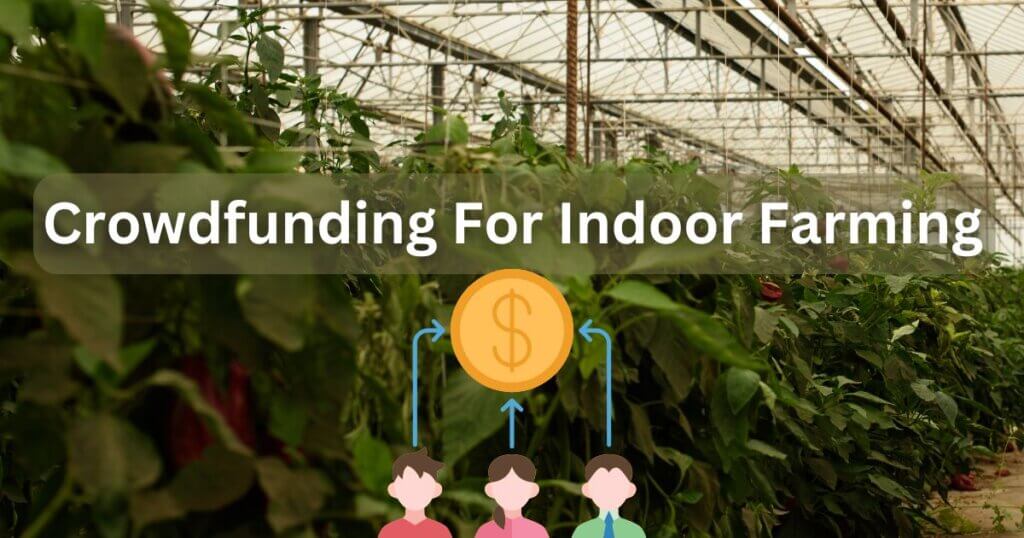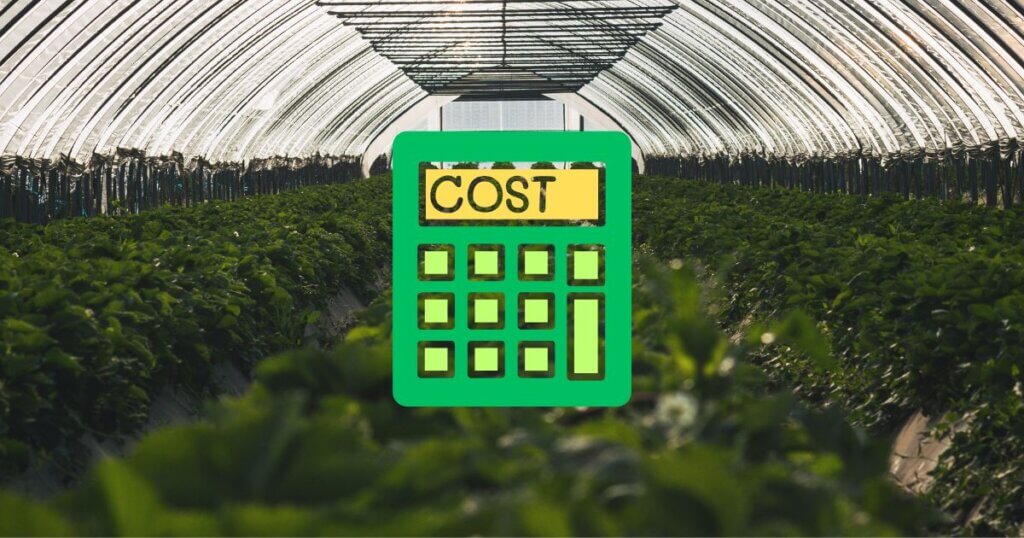Comparing Shelving Units for Indoor Farming: Best Picks to Skyrocket Your Yields

Indoor Farming Hub is an Amazon Associate and earns from qualifying purchases.
Indoor farming is no longer just a trend—it’s a revolution. Whether you’re growing basil on a balcony or managing a vertical farm in a warehouse, your shelving setup makes or breaks your success. In this guide, we’re comparing shelving units for indoor farming so you can pick the best system for your space, crops, and budget. Ready to boost your yields? Let’s dig in!
Table of Contents
Why Choosing the Right Shelving Unit Matters in Indoor Farming
Space Optimization in Limited Indoor Environments
Every inch counts when you’re growing indoors. A poorly chosen shelf can waste precious space and block airflow. But the right shelving system transforms your space into a vertical garden wonderland. Think of shelving like the skeleton of your farm—it holds everything together and gives it structure.
Impact on Crop Health and Accessibility
Shelving affects more than just how your setup looks—it directly influences plant health. If plants are packed too tightly or are hard to reach, you risk disease, poor growth, and frustrating harvests. Good shelving ensures better airflow, easier maintenance, and healthier crops. It helps you grow smarter, not just more.
Efficiency in Vertical Farming Operations
Time is money in any farm, especially indoors. Shelving that’s difficult to clean, move, or adjust slows you down and eats into productivity. The best systems support automation, lighting rigs, and irrigation lines with ease. When everything fits and flows, your farm operates like a finely tuned machine.
Key Factors to Consider When Comparing Shelving Units for Indoor Farming
Load-Bearing Capacity and Stability
Plants get heavy. Between pots, water, grow lights, and trays, your shelving unit must handle weight without wobbling or collapsing. Go for at least 200–800 lbs per shelf depending on your crop setup.
The Seville Classics Heavy-Duty Steel Wire Shelving supports up to 800 lbs per shelf, ideal for indoor farmers growing heavy crops or stacked trays needing strong, stable shelving.
Material Choices: Metal vs Plastic vs Wood
- Metal (Steel): Durable, strong, fire-resistant. Ideal for heavy-duty farming.
- Plastic (PVC/HDPE): Lightweight, rust-free, but limited in strength.
- Wood: Sustainable and customizable, but can warp or mold in humid spaces.
Each has its pros, but metal shelving is often king for serious growers.
The HDX Plastic Utility Shelving Unit is a lightweight, rust-resistant option perfect for small-scale or hobby indoor growers seeking an affordable and easy-to-clean shelf.
Adjustable vs Fixed Shelving Systems
Fixed shelves are fine if your crop height stays consistent, but adjustable ones allow flexibility. Growing lettuce this month and strawberries the next? Go adjustable.
Shelving Design for Hydroponic and Soil-Based Setups
Hydroponic setups often need extra space for plumbing and water reservoirs. Choose open-wire shelves for drainage and airflow, or solid trays for nutrient film technique (NFT) systems.
Different Types of Shelving Units for Indoor Farming
Steel Wire Shelving Units
These are the workhorses of indoor farming.
Pros and Cons of Steel Wire Racks
Pros:
- Excellent airflow
- High weight capacity
- Compatible with lighting systems
Cons:
- Pricier than plastic
- Can rust if not coated
Industrial-Grade Metal Shelves
Industrial-grade metal shelves are commonly used in commercial indoor farms. They’re heavy-duty, built to withstand high loads, and designed to last for decades. Their solid construction supports large-scale crop operations with ease. These shelves are an investment in durability and efficiency.
Best Use Cases in Large-Scale Farms
These shelving units are ideal where automation and scalability are critical. If your setup includes conveyor belts, robotic arms, or integrated lighting and irrigation systems, industrial shelves are a must. They provide the stability and space needed for advanced systems. Serious growers aiming for long-term output should start here.
PVC and Plastic Shelving Options
PVC and plastic shelving is lightweight, easy to clean, and simple to assemble. These units resist moisture and rust, making them suitable for high-humidity environments. Their modular design is great for temporary or seasonal setups. While not as strong as metal, they serve many growers well.
Budget-Friendly Solutions for Small Growers
The affordability of plastic shelves makes them popular among hobbyists and small-scale growers. They’re perfect for quick indoor garden setups that don’t require heavy-duty support. Just be cautious not to overload them with heavy trays or water-filled containers. Lightweight crops like herbs or seedlings work best.
DIY Wooden Shelving Systems
DIY wooden shelves are perfect for growers who want a sustainable or customized option. Wood can be cut and shaped to fit your unique indoor farm layout. It’s also visually appealing and adds a natural touch to your space. However, proper treatment and sealing are essential to prevent rot or mold.
Customization and Sustainability
Wooden shelving allows for creative flexibility—you can build around lighting setups, ventilation, or plant height. Sustainable materials like bamboo or reclaimed wood make your farm greener. It’s a hands-on project, but the payoff can be rewarding. Just be sure to seal the wood well and monitor humidity to extend its lifespan.
Comparing Shelving Units for Indoor Farming by Farm Type
Microgreen Growers
Microgreens grow quickly and thrive in compact vertical spaces. They don’t require tall shelves, making multi-tiered setups ideal. Use wire racks with built-in trays and integrated grow lights to maximize yield in limited space. These systems are perfect for stacking rows of greens like tiny, efficient soldiers.
Leafy Green and Lettuce Farms
Leafy greens and lettuces require slightly more vertical room than microgreens. Adjustable steel shelves allow you to fine-tune spacing as plants mature. Pairing these shelves with LED lighting rigs ensures even light distribution across all tiers. This setup supports consistent, healthy growth for a variety of leafy crops.
Vertical Tomato or Vine Crop Setups
Tomatoes and vine crops are heavier and grow taller, demanding more support and space. You’ll need industrial-grade shelving with strong frames and high weight capacity. Look for racks with extra vertical clearance to accommodate trellising systems and support hooks. These heavy-duty units ensure stability and structure for climbing or fruiting plants.
Hydroponic, Aquaponic, and Aeroponic Systems
Hydro systems need shelf space for reservoirs. Choose open designs that allow easy plumbing access. In aeroponics, misting systems need to be safely suspended—ensure your shelving doesn’t interfere.
The VIVOSUN Hydroponic Grow Kit is great for NFT hydroponic systems and illustrates how shelving must accommodate plumbing and water reservoirs effectively.
Safety and Maintenance of Indoor Farming Shelving Units
Preventing Rust and Mold
Use powder-coated or stainless steel to prevent rust. Keep humidity under control with fans and dehumidifiers. And avoid wood unless it’s treated.
The Eva-Dry Wireless Mini Dehumidifier helps control humidity to prevent mold and rust on metal or wooden shelving units in humid indoor farm environments.
Easy-to-Clean and Sanitize Surfaces
Flat metal or plastic surfaces are best for wiping down and keeping pests and pathogens at bay. Avoid textured surfaces—they hide dirt and bacteria.
Cost Comparison and ROI of Different Shelving Systems
Initial Investment vs Long-Term Benefits
- Plastic Shelf (4-Tier): ~$40
- Steel Wire Shelf (5-Tier): ~$120
- Industrial Shelf Unit: $400–$1000+
While metal may seem expensive, its lifespan and load capacity offer better ROI over time.
Energy Efficiency Through Smart Design
Shelving impacts light spread. Using reflective metal and placing LED grow lights efficiently can save up to 30% in electricity annually. That’s huge over the long term.
Expert Tips for Choosing the Best Shelving Units for Indoor Farms
Mistakes to Avoid When Selecting a Shelving System
- Ignoring vertical space
- Skimping on weight ratings
- Choosing shelves without airflow
- Forgetting about future crop changes
Must-Have Features for High-Yield Farming
- Adjustable shelves
- Locking wheels (for mobility)
- Built-in lighting compatibility
- Corrosion-resistant material
Product Recommendations: Best Shelving Units for Indoor Farming
Top-Rated Shelving Units from Amazon
AmazonBasics 5-Shelf Shelving Unit
Strong, adjustable, and coated to resist rust.
Origami Foldable Steel Shelf
Perfect for quick setups—no tools needed.
Greenaholics Multi-Tier Grow Shelf
Made for plants—includes built-in LED grow lights.
Accessories and Add-ons to Enhance Productivity
- Grow Light Strips
- Humidity Monitors
- Drip Trays
- Caster Wheels for Mobility
The Barrina LED Grow Light Strips provide energy-efficient full-spectrum light, perfect for tight shelving setups to promote healthy plant growth on each tier.
The Govee Bluetooth Hygrometer Thermometer allows easy monitoring of temperature and humidity levels to maintain optimal conditions for indoor shelves.
The Vivohome Drip Trays keep shelves clean by catching excess water runoff, preventing damage and simplifying maintenance in indoor farming setups.
The Set of 4 Locking Caster Wheels adds mobility and safety to shelving units, allowing easy repositioning and better access to plants.
Installation and Setup Guide for Shelving Units
Tools You’ll Need
- Rubber mallet
- Level
- Screwdriver (if needed)
- Zip ties for wires and lights
The TEKTON Rubber Mallet assists in assembling shelving safely without damaging parts or surfaces.
The CRAFTSMAN 9-Inch Torpedo Level ensures shelves are perfectly level for proper water drainage and even light distribution.
The VELCRO Brand One-Wrap Cable Ties are reusable and ideal for organizing wires and securing irrigation tubing or lighting on shelving units.
Setting Up for Maximum Light and Airflow
Leave 6–12 inches between tiers for airflow. Place lights above canopy levels. Avoid blocking vents or drains.
Real-Life Examples: What Successful Indoor Farmers Use
Case Study 1: Urban Microgreen Farm
This urban microgreen farm operates with a series of 4-tier wire shelving units equipped with built-in LED grow lights. The setup is compact, efficient, and perfect for maximizing yields in tight indoor spaces. With 10 trays per unit and up to 3 harvests per week, the productivity is impressive. The initial investment was recouped in just 6 months, proving the system’s strong return on investment (ROI).
Case Study 2: Commercial Vertical Lettuce Facility
A large-scale lettuce facility utilizes custom-built aluminum shelving racks designed specifically for vertical farming. These racks are equipped with automated irrigation systems and integrated IoT sensors. The system continuously monitors moisture levels, light exposure, and pH values to maintain ideal growing conditions. This high-tech solution enables large, consistent harvests while reducing manual labor and resource waste.
The Future of Indoor Farming: Smart Shelving and Automation
IoT-Enabled Shelving Units
Shelves are getting smarter—integrated sensors, climate control, and lighting automation are revolutionizing the industry. Soon, your shelf might tell you when to water your plants.
Adjustable Shelves with Climate Control Integration
Imagine adjusting shelf height and humidity with an app. That’s the next wave—and it’s closer than you think.
The Inkbird WiFi Temperature and Humidity Controller enables smart automation of shelf environment conditions for precision indoor farming.
Final Thoughts: Making the Right Choice When Comparing Shelving Units for Indoor Farming
Your shelving system isn’t just furniture—it’s the foundation of your farm. Choose smart. Think about your crop, your future, and your workflow. Whether you’re a weekend grower or a commercial operation, the right shelving will help you grow more, stress less, and maybe even fall in love with indoor farming all over again.
FAQs on Comparing Shelving Units For Indoor Farming
1. What type of shelving unit is best for small indoor farms or home growers?
For small-scale growers or hobbyists, lightweight plastic or wire shelving units are ideal. They are easy to assemble, affordable, and work well in limited spaces. Look for options with adjustable shelves to accommodate various plant heights and built-in trays or lighting for added convenience.
2. How do shelving materials affect plant health and farm efficiency?
Shelving materials like metal provide excellent support and airflow, reducing the risk of mold and improving crop health. Plastic is moisture-resistant and easy to clean, but may not handle heavy loads. Wood adds sustainability but requires sealing to prevent rot. The right material can significantly impact both yield and maintenance effort.
3. Can I use regular storage shelves for indoor farming?
While it’s possible, regular storage shelves may not offer the airflow, weight capacity, or moisture resistance needed for farming. Grow-specific shelving units are designed to support lighting systems, irrigation lines, and plant trays, making them more suitable for consistent and healthy plant growth.
4. What shelving features help improve indoor farm productivity?
High-yield farms benefit from adjustable shelves, locking wheels, corrosion-resistant finishes, and compatibility with lighting and irrigation. These features allow you to adapt quickly to different crops, improve airflow and light penetration, and simplify cleaning and mobility.
5. How do I prevent rust and mold on indoor farming shelves?
Use stainless steel or powder-coated shelving units that resist moisture damage. Maintain proper ventilation with fans or dehumidifiers and regularly clean the surfaces. Avoid untreated wood in humid environments, and consider adding accessories like drip trays and humidity monitors to manage moisture more effectively.
Other Useful Resources Related To Comparing Shelving Units For Indoor Farming
- The Complete Guide to Vertical Grow Rack Systems for Indoor Farming
A comprehensive overview of vertical rack types, benefits, and installation considerations—perfect for understanding space optimization and system scalability. (opticlimatefarm.com) - Vertical Farming Equipment & Planning Tips – Shelving Inc.
Focused on converting warehouse spaces into efficient indoor farms using industrial shelving—great insights into structural planning and shelving system integration. (shelving.com) - Vertical Grow Rack Systems | Montel
Manufacturer guide to high-density mobile and static racks, with details on airflow, safety features, and shelving options for commercial growers. (montel.com) - Vertical Farming for Beginners: A Step-by-Step Guide… – Vegbed
A clear, accessible guide emphasizing DIY builds, hydroponic system integration, and optimizing vertical space in small-scale setups. (vegbed.com) - Create Your Own Grow‑Light Shelving Unit – Garden.org
A practical how‑to that walks through designing and building a custom shelving unit with integrated grow lights—ideal for hobbyists and custom solutions. (garden.org)


















